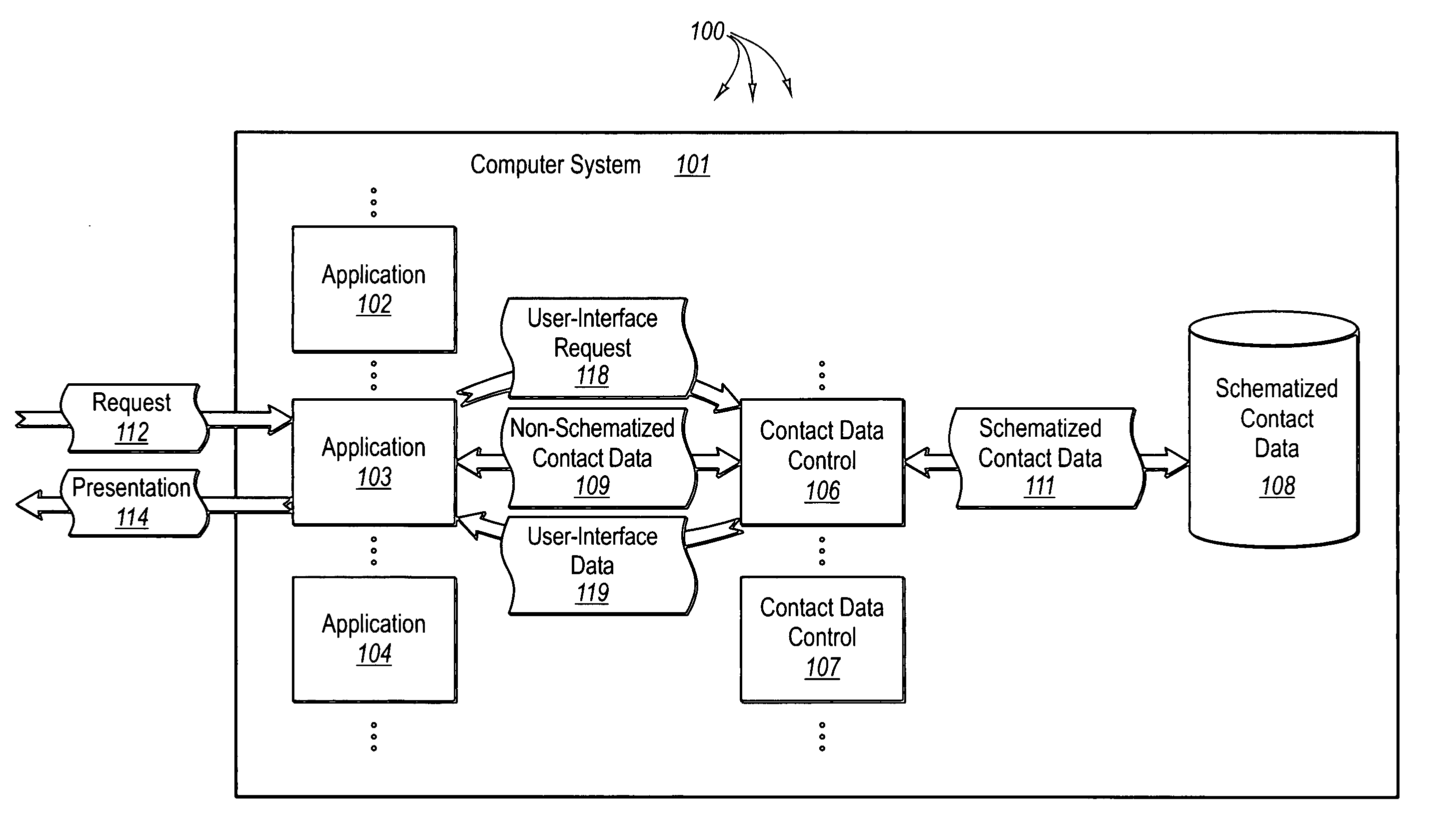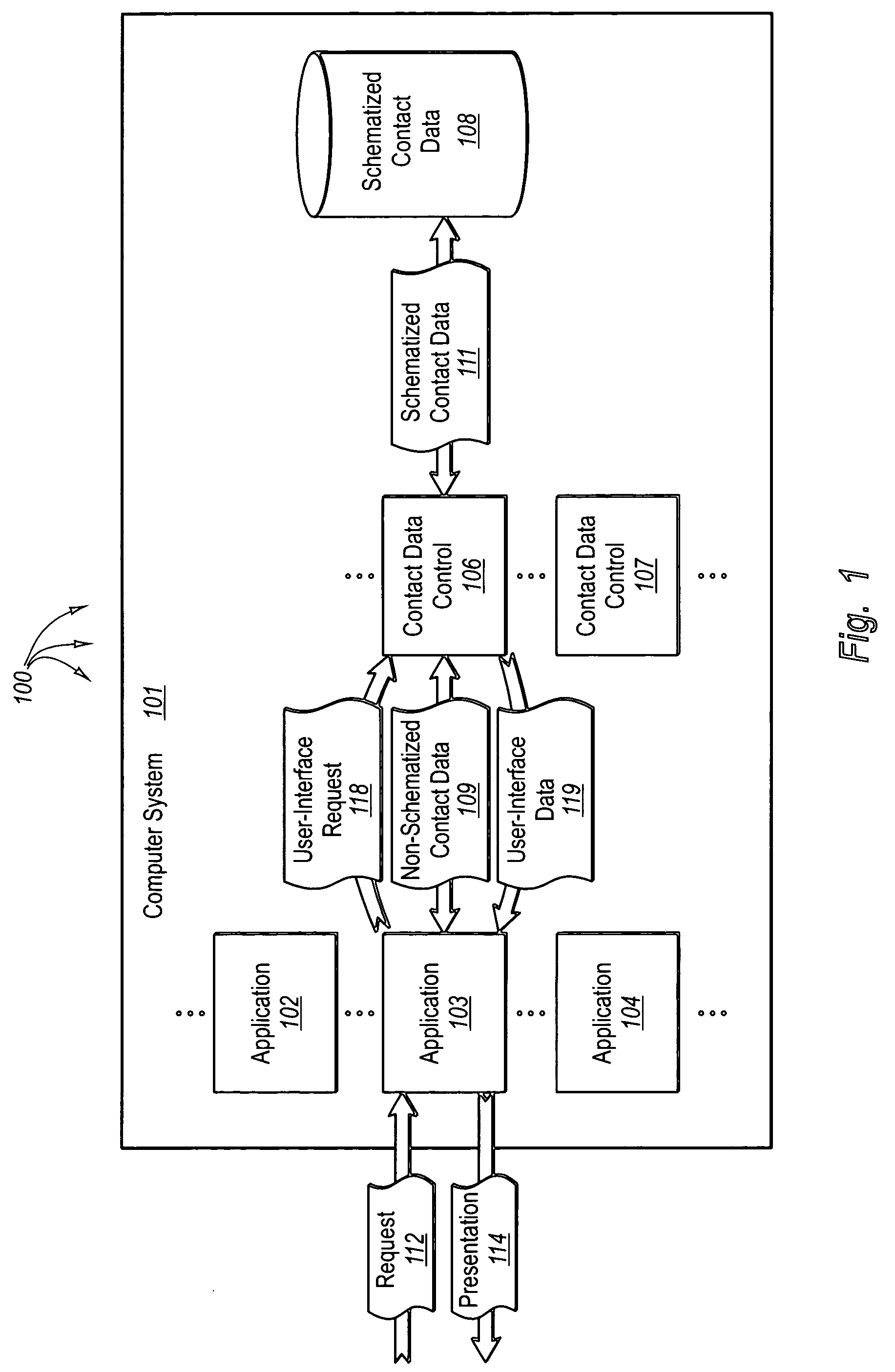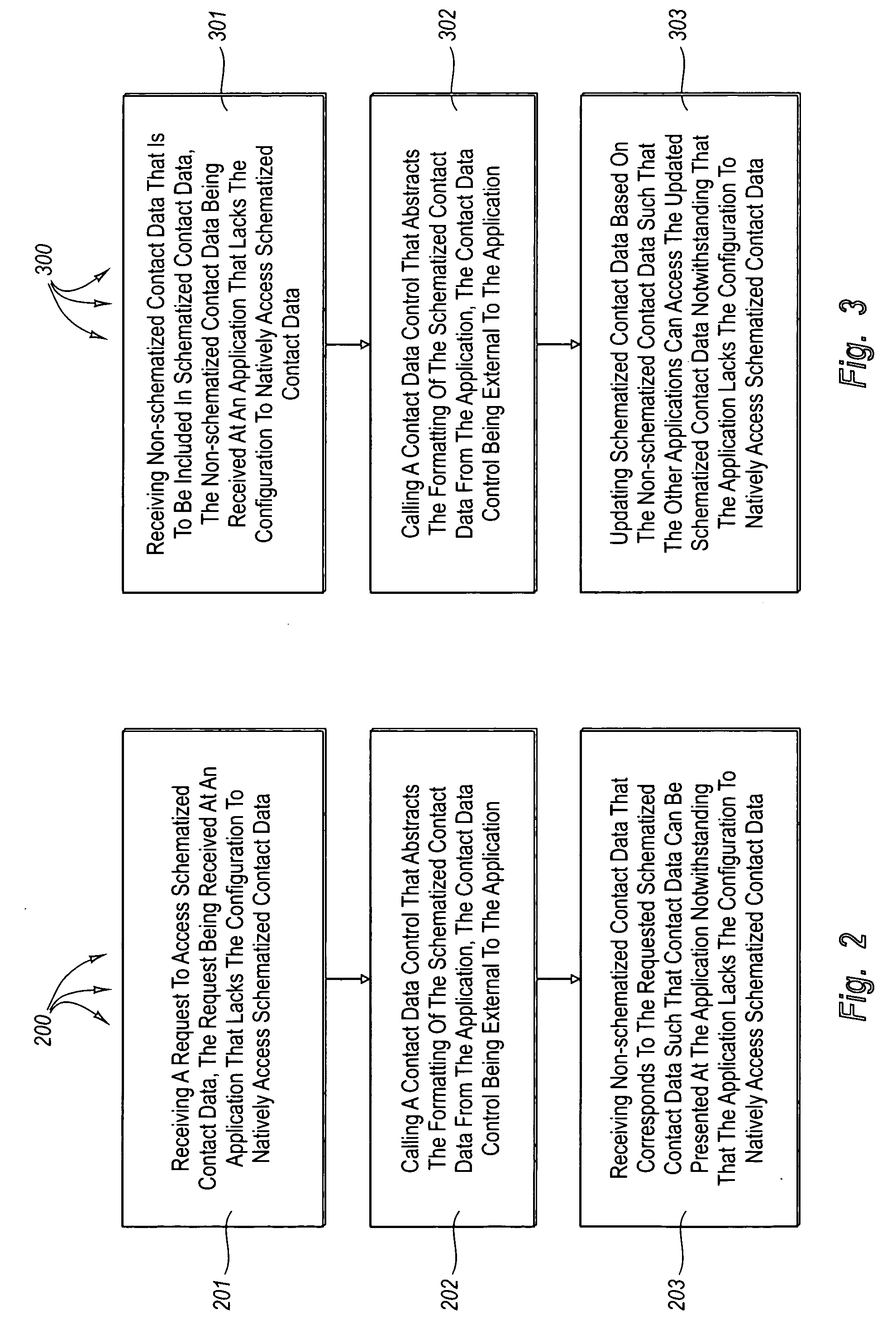Because there are so many different types of contact information, it can be difficult for anyone to remember all of the contact information that is associated with the various contacts that they communicate with.
The difficulty in remembering contact information is even further magnified by the fact that different applications require different types of contact information and sometimes different formats of contact information.
Accessing a contact information
directory, however, is somewhat undesirable because it can increases the total amount of time that is required of the user.
Even when the contact information is already known, the
delay in time it takes to manually enter the known contact information can also be undesirable.
Despite the benefits provided by existing contact management systems, the large variety of specialized and disparate contact information directories that are associated with the various applications and devices can make it difficult for users to quickly access all of the available contact information that corresponds to a particular contact.
One reason disparate contact information directories are problematic is that use of disparate contact information directories can increase the difficulty of identifying all available means for communicating with a contact.
Having disparate contact information directories can also be problematic for obtaining different types of contact information about different contacts.
If the desired contact data for each of the different entities is located in a different contact
management system of different applications, then each application will have to be accessed to obtain the desired information, thereby requiring the undesirable expenditure of time and resources.
It will be appreciated that this can be particularly problematic when a user has forgotten in which of the contact directories the contact information is stored.
The variety of directories and corresponding storage capabilities, however, can vary from one application to the next, thereby increasing the difficulty for users to know which of the contact information can be duplicated in each of the different directories.
Furthermore, even when it is possible for portions of the contact information to be redundantly stored in each of the different contact directories, such redundant storage would represent undesirable and unnecessary expenditure of computing resources.
Yet another problem with redundantly storing contact information within existing contact directories is that it can be difficult to propagate changes to the contact information throughout all of the various contact directories that are storing the modified contact information.
Otherwise, the contact information that is available will be inconsistent and possibly incorrect.
Another problem with existing contact management systems is that because they are so specialized, they fail to provide very extensive and rich search and view capabilities of the contact information.
In particular, most contact management systems are relegated to providing only two-dimensional columns or lists of the stored data.
Yet another problem with existing contact management systems is that they do not enable a user to view, create, and edit relationships between contacts.
More particularly, existing systems do not enable a user to view the relationships existing between contacts or to create and edit these relationships.
However, due at least in part to the sheer number of different data types and different data formats that may expressed in a common contact schema, it may be difficult for applications to access contact information according to the common contact schema.
Further, application designers may have difficulty understanding a common contact schema and designing applications that insure compliance with the common contact schema during execution.
Unfortunately, non-compliance with data types and / or data formats expressed in a common contact schema can make corresponding contact information unstorable or inaccessible or may even cause the centralized location to malfunction.
 Login to View More
Login to View More  Login to View More
Login to View More 


